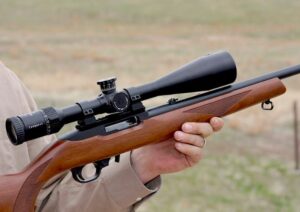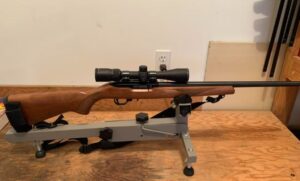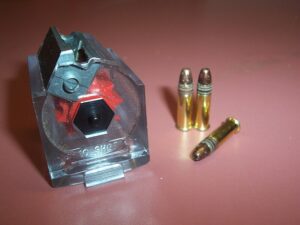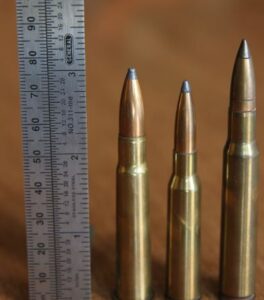
Small game hunting is an art that combines skill, patience, and knowledge of the natural world. It’s a pursuit that requires a keen eye, steady hand, and an understanding of the environment. For those who engage in this activity, it offers a unique connection to nature and a chance to hone one’s abilities in tracking and precision. The thrill of the hunt is not just in the capture but in the entire experience of being outdoors, observing wildlife, and mastering the techniques necessary for success. Whether you’re a seasoned hunter or a beginner, understanding the nuances of small game hunting can enhance your experience and increase your chances of success. From choosing the right equipment to understanding animal behavior, each aspect plays a crucial role in the hunt. This guide will delve into the essential skills, techniques, and knowledge needed to excel in small game hunting, ensuring a rewarding and safe experience.
What are the essential skills for mastering small game hunting?
Mastering small game hunting requires a blend of skills that go beyond just aiming and shooting. Observation is key. A hunter must be able to read the environment and notice subtle signs of animal presence. This includes recognizing tracks, droppings, and other indicators that small game is nearby. Stealth is another crucial skill. Moving quietly and minimizing noise can prevent scaring away potential targets. This requires practice and an understanding of how sound travels in different terrains.
Another essential skill is patience. Small game hunting often involves long periods of waiting and watching. A successful hunter knows when to stay still and when to move. This patience is often rewarded when the right opportunity presents itself. Additionally, a good hunter must have a solid understanding of the behavior and habits of the animals they are pursuing. This knowledge can inform decisions about where to hunt and when.
Finally, proficiency with hunting equipment is vital. Whether using a firearm, bow, or other tools, a hunter must be comfortable and accurate with their chosen method. Regular practice and maintenance of equipment ensure reliability in the field. Together, these skills form the foundation of successful small game hunting.
Precision techniques for successful small game hunting
Precision is the cornerstone of successful small game hunting. It starts with understanding your weapon. Whether it’s a rifle, shotgun, or bow, knowing its capabilities and limitations is crucial. Practice regularly to improve your aim and accuracy. Familiarize yourself with the feel of your weapon, the weight, and the trigger pull. This familiarity can make a significant difference in the field.
Next, consider your shooting stance. A stable position enhances accuracy. Practice different stances to find what works best for you. Remember, the terrain may require you to adapt quickly. Being versatile in your shooting positions can give you an edge.
Breathing control is another precision technique. Steady, controlled breaths can help stabilize your aim. Practice timing your shots with your breathing to improve accuracy. This technique is especially useful when taking longer shots.
Understanding the anatomy of your target is also important. Knowing where to aim for a quick, humane kill is a mark of a skilled hunter. Study the vital areas of the animals you hunt to ensure precision in your shots.
Finally, practice makes perfect. Regularly hone your skills at a shooting range or similar environment. The more you practice, the more precise your shots will become, leading to greater success in the field.
How does patience play a role in small game hunting?
Patience is a virtue, especially in small game hunting. It plays a critical role in the success of a hunt. Often, hunters must wait for extended periods, observing and listening for signs of game. This waiting game requires a calm and composed mindset. Rushing can lead to mistakes and missed opportunities.
Patience allows hunters to carefully assess their surroundings. It provides the time needed to understand animal behavior and patterns. By observing patiently, hunters can predict movements and increase their chances of a successful encounter.
Moreover, patience is essential when tracking game. Animals can be elusive, and following their trails requires time and attention to detail. A patient hunter can follow these trails without disturbing the environment, increasing the likelihood of a successful hunt.
In addition, patience helps in decision-making. It allows hunters to wait for the perfect shot, ensuring accuracy and a humane kill. Impulsive actions can lead to poor shots and wounded animals.
Ultimately, patience enhances the overall hunting experience. It fosters a deeper connection with nature and a greater appreciation for the skill involved in small game hunting. By embracing patience, hunters can improve their success rates and enjoy a more fulfilling hunt.
Choosing the right equipment for small game hunting
Selecting the right equipment is crucial for small game hunting. The choice of weapon is the first consideration. Rifles and shotguns are popular options, each with its advantages. Rifles offer precision for longer shots, while shotguns provide a wider spread, ideal for fast-moving targets. Choose based on the type of game and personal preference.
Ammunition is another important factor. Different calibers and shot sizes are suited for various types of small game. Research and select the appropriate ammunition to ensure effectiveness and minimize damage to the game.
Optics can enhance accuracy. Scopes and binoculars help in spotting and targeting game from a distance. Invest in quality optics to improve your chances of a successful hunt.
Clothing and gear are also essential. Camouflage clothing helps blend into the environment, reducing the chance of detection. Consider the weather and terrain when selecting clothing to ensure comfort and mobility.
Finally, safety equipment should not be overlooked. Ear and eye protection are vital when using firearms. A first aid kit is also a must-have in case of emergencies. By choosing the right equipment, hunters can enhance their effectiveness and safety in the field.
What are the best locations for small game hunting?
The success of small game hunting often depends on choosing the right location. Woodlands are prime spots, offering abundant cover and food sources for small game. Look for areas with dense underbrush and a mix of trees and open spaces. These environments provide ideal habitats for animals like rabbits and squirrels.
Fields and meadows are also excellent hunting grounds. These open areas attract small game seeking food and shelter. Pay attention to the edges of fields, where animals often travel and feed.
Water sources are another key location. Streams, ponds, and marshes attract a variety of small game. These areas provide water and food, making them hotspots for hunting. Be mindful of the terrain and approach quietly to avoid spooking game.
Public lands, such as state and national forests, often offer designated hunting areas. These locations are managed to support wildlife populations and provide opportunities for hunters. Check local regulations and obtain necessary permits before hunting on public lands.
Finally, private lands can be excellent hunting spots if you have permission from the landowner. These areas may offer less hunting pressure and more opportunities for success. By choosing the right location, hunters can increase their chances of a fruitful hunt.
Understanding the behavior of small game animals
Understanding the behavior of small game animals is crucial for successful hunting. Each species has unique habits and patterns that can inform hunting strategies. For instance, rabbits are most active during dawn and dusk, often feeding in open areas near cover. Knowing this can help hunters plan their outings for the best chance of success.
Squirrels, on the other hand, are active throughout the day, especially in the morning and late afternoon. They often forage for food in trees and on the ground. Observing their movements can provide opportunities for a well-placed shot.
Small game animals are also influenced by weather and seasons. Cold weather may drive them to seek shelter, while warmer temperatures can increase activity levels. Understanding these patterns can help hunters anticipate animal behavior and adjust their strategies accordingly.
Additionally, small game animals rely heavily on their senses for survival. They have keen hearing and sight, making stealth and camouflage important for hunters. By minimizing noise and movement, hunters can avoid detection and increase their chances of a successful encounter.
By studying and understanding the behavior of small game animals, hunters can develop effective strategies and improve their success rates in the field.
How to improve accuracy in small game hunting?
Improving accuracy in small game hunting is essential for success. Start with regular practice. Spend time at a shooting range to hone your skills. Focus on consistency in your shooting technique. This includes maintaining a steady stance, proper grip, and smooth trigger pull.
Breathing control is another key factor. Practice timing your shots with your breathing. Inhale deeply, exhale slowly, and squeeze the trigger at the natural pause. This technique can help stabilize your aim and improve accuracy.
Understanding your weapon is also crucial. Familiarize yourself with its mechanics and capabilities. Regular maintenance ensures reliability and performance. Experiment with different ammunition to find what works best for your weapon and hunting style.
Use optics to your advantage. Scopes and binoculars can enhance your ability to spot and target game. Practice using them to improve your accuracy at various distances.
Finally, patience and focus are essential. Take your time to line up the perfect shot. Rushing can lead to mistakes and missed opportunities. By practicing these techniques, hunters can improve their accuracy and increase their chances of a successful hunt.
Safety tips for small game hunters
Safety is paramount in small game hunting. Always treat your weapon as if it’s loaded. Keep the muzzle pointed in a safe direction and your finger off the trigger until ready to shoot. Familiarize yourself with your weapon’s safety features and use them consistently.
Wear appropriate safety gear. Ear and eye protection are essential when using firearms. Bright clothing or a blaze orange vest can help ensure visibility to other hunters, reducing the risk of accidents.
Be aware of your surroundings. Know the location of other hunters and any potential hazards in the area. Avoid shooting near roads, buildings, or populated areas. Always have a clear line of sight before taking a shot.
Communicate with your hunting partners. Establish signals or methods to stay in contact. This can help coordinate movements and prevent accidents.
Finally, carry a first aid kit and know basic first aid procedures. Accidents can happen, and being prepared can make a difference. By following these safety tips, hunters can enjoy a safe and successful hunting experience.
What are the legal regulations for small game hunting?
Understanding legal regulations is crucial for small game hunting. Regulations vary by location, so it’s important to research and comply with local laws. This includes obtaining the necessary licenses and permits. These documents are often required to hunt legally and may vary depending on the species and area.
Season dates and bag limits are also regulated. These rules help manage wildlife populations and ensure sustainable hunting practices. Familiarize yourself with the specific dates and limits for the species you intend to hunt.
Weapon restrictions may apply in certain areas. Some locations have specific rules regarding the type of firearms or ammunition that can be used. Ensure your equipment complies with these regulations to avoid legal issues.
Additionally, some areas may have restrictions on hunting methods or times of day. Be aware of any special regulations that may apply to your hunting area.
Finally, respect private property and obtain permission before hunting on private lands. Trespassing can lead to legal consequences and damage relationships with landowners. By understanding and adhering to legal regulations, hunters can enjoy a responsible and lawful hunting experience.
How to track and identify small game species?
Tracking and identifying small game species is a skill that enhances hunting success. Start by learning to recognize tracks. Each species leaves distinct footprints that can provide clues to their presence. Study field guides or take a tracking course to improve your skills.
Droppings are another indicator of small game activity. Different species produce unique droppings that can help identify them. Observing these signs can inform your hunting strategy and increase your chances of success.
Listen for vocalizations. Many small game animals make distinctive sounds. Squirrels chatter, while rabbits may thump the ground. These sounds can help locate and identify game in the field.
Observe feeding signs. Chewed vegetation or disturbed ground can indicate recent activity. Understanding these signs can help pinpoint the location of small game.
Finally, use optics to aid in identification. Binoculars or scopes can help spot and identify game from a distance. Practice using these tools to improve your ability to track and identify small game species. By honing these skills, hunters can increase their success rates and enjoy a more rewarding hunting experience.
Conclusion
Small game hunting is a rewarding pursuit that requires a blend of skills, knowledge, and patience. From understanding animal behavior to mastering precision techniques, each aspect plays a crucial role in the hunt. Choosing the right equipment and knowing the best locations can enhance your chances of success. Safety and legal compliance are paramount, ensuring a responsible and enjoyable experience. By honing your skills in tracking and identification, you can increase your success rates and deepen your connection with nature. Whether you’re a seasoned hunter or a beginner, embracing these principles can lead to a more fulfilling and successful hunting experience. Remember, the thrill of the hunt is not just in the capture but in the entire journey of learning and mastering the art of small game hunting.






